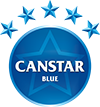Private Health Insurance Rebate Tiers

KEY POINTS
- The private health insurance rebate is income tested, meaning your rebate may be reduced if you have a higher income.
- The rebate ranges from 8.095% to 32.385%, depending on your income, age and whether you’re single or have your own family.
- You can claim the private health insurance rebate as either a tax offset or as a reduction to the premiums you pay for your private health cover.
What is the private health insurance rebate?
The private health insurance rebate is an amount of money the Federal Government may contribute towards the cost of your private health insurance premiums. This includes premiums for hospital cover, extras cover and combined hospital and extras cover. The rebate is income tested, meaning your rebate will be reduced if you have a higher income, or you might not be entitled to any rebate at all.
The Federal Government introduced the private health insurance rebate in 1999 in a bid to encourage more Aussies to take out private health cover and relieve pressure on the public health system.
Who is eligible for the private health insurance rebate?
To claim the private health insurance rebate, the Australian Taxation Office (ATO) says you must:
- Be eligible for Medicare
- Have a complying Australian-registered private health insurance policy (you can check this with your insurance provider)
- Have an income for surcharge purposes that is less than the Tier 3 income threshold. The Tier 3 income threshold for the 2025-26 income year is $158,001 as a single, or $316,001 as a family
- Be a private health insurance incentive beneficiary (this includes adults with a private health insurance policy and, if the policy only covers a child, the parent of that child).
 Psychiatric services
Psychiatric services
 Rehabilitation
Rehabilitation
 General dental
General dental
 Physiotherapy
Physiotherapy
 Psychiatric services
Psychiatric services
 Rehabilitation
Rehabilitation
 General dental
General dental
 Physiotherapy
Physiotherapy
 Psychiatric services
Psychiatric services
 Rehabilitation
Rehabilitation
 General dental
General dental
 Physiotherapy
Physiotherapy
 Psychiatric services
Psychiatric services
 Rehabilitation
Rehabilitation
 General dental
General dental
 Physiotherapy
Physiotherapy
 Psychiatric services
Psychiatric services
 Rehabilitation
Rehabilitation
 General dental
General dental
 Physiotherapy
Physiotherapy
 Psychiatric services
Psychiatric services
 Rehabilitation
Rehabilitation
 General dental
General dental
 Physiotherapy
Physiotherapy
 Psychiatric services
Psychiatric services
 Rehabilitation
Rehabilitation
 General dental
General dental
 Physiotherapy
Physiotherapy
Canstar may earn a fee for referrals from its website tables, and from Sponsorship or Promotion of certain products. Fees payable by product providers for referrals and Sponsorship or Promotion may vary between providers, website position, and revenue model. Sponsorship or Promotion fees may be higher than referral fees. Sponsored or Promoted products are clearly disclosed as such on website pages. They may appear in a number of areas of the website such as in comparison tables, on hub pages and in articles. Sponsored or Promoted products may be displayed in a fixed position in a table, regardless of the product’s rating, price or other attributes. The table position of a Sponsored or Promoted product does not indicate any ranking or rating by Canstar. For more information please see How We Get Paid.
How much is the private health insurance rebate?
At the time of writing, the private health insurance rebate ranges from 8.095% to 32.385%, depending on your income, age and whether you are single or have your own family. Generally speaking, the older you are and the less you earn, the higher your rebate will be.
The table below can help you estimate which rebate tier you may fall under, bearing in mind that single-parent households and couples fall into the “families” category. The ATO says for families with children, the thresholds are increased by $1,500 for each child after the first. The rebate is presented as the percentage that the government will contribute towards the cost of your health insurance premiums. If you’re in a couple or family, the rebate is applied based on the age of the oldest person covered by the health insurance policy.
What are the private health insurance rebate tiers?
2024-25 financial year income thresholds
← Mobile/tablet users, scroll sideways to view full table →
| Family status |
Base tier |
Tier 1 | Tier 2 | Tier 3 |
|---|---|---|---|---|
| Single | $97,000 or less |
$97,001 – $113,000 |
$113,001 – $151,000 |
$151,001 or more |
| Family | $194,000 or less |
$194,001 – $226,000 |
$226,001 – $302,000 |
$302,001 or more |
Source: Australian Tax Office (ATO). The family income threshold is increased by $1,500 for each Medicare levy surcharge dependent child after the first child.
The Federal Government reduced rebate levels on the 1st of April 2025. The rebate tiers did not change for the 2024-25 financial year, but you will likely have two different rebate rates for the same financial year, one applying from 1 July 2024 to 31 March 2025 and another from 1 April 2025 to 30 June 2025.
Rebate rates for 2024-25 financial year (if the oldest person on the policy is under 65 years of age)
← Mobile/tablet users, scroll sideways to view full table →
| Income for surcharge purposes |
Rebate for 1 July 2024 – 31 March 2025 |
|---|---|
| Single: $97,000 or less Family: $194,000 or less |
24.608% |
| Single: $97,001 – $113,000 Family: $194,001 – $226,000 |
16.405% |
| Single: $113,001 – $151,000 Family: $226,001 – $302,000 |
8.202% |
| Single: $151,001 or more Family: $302,001 or more |
Not eligible |
| Income for surcharge purposes |
Rebate for 1 April 2025 – 30 June 2025 |
| Single: $97,000 or less Family: $194,000 or less |
24.288% |
| Single: $97,001 – $113,000 Family: $194,001 – $226,000 |
16.192% |
| Single: $113,001 – $151,000 Family: $226,001 – $302,000 |
8.095% |
| Single: $151,001 or more Family: $302,001 or more |
Not eligible |
Source: Privatehealth.gov.au.
Rebate rates 2024-25 financial year (if the oldest person on the policy is between 65 and 69 years of age)
← Mobile/tablet users, scroll sideways to view full table →
| Income for surcharge purposes |
Rebate for 1 July 2024 – 31 March 2025 |
|---|---|
| Single: $97,000 or less Family: $194,000 or less |
28.710% |
| Single: $97,001 – $113,000 Family: $194,001 – $226,000 |
20.507% |
| Single: $113,001 – $151,000 Family: $226,001 – $302,000 |
12.303% |
| Single: $151,001 or more Family: $302,001 or more |
Not eligible |
| Income for surcharge purposes |
Rebate for 1 April 2025 – 30 June 2025 |
| Single: $97,000 or less Family: $194,000 or less |
28.337% |
| Single: $97,001 – $113,000 Family: $194,001 – $226,000 |
20.240% |
| Single: $113,001 – $151,000 Family: $226,001 – $302,000 |
12.143% |
| Single: $151,001 or more Family: $302,001 or more |
Not eligible |
Source: Privatehealth.gov.au.
Rebate rates 2024-25 financial year (if the oldest person on the policy is over 70 years of age)
← Mobile/tablet users, scroll sideways to view full table →
| Income for surcharge purposes |
Rebate for 1 July 2024 – 31 March 2025 |
|---|---|
| Single: $97,000 or less Family: $194,000 or less |
32.812% |
| Single: $97,001 – $113,000 Family: $194,001 – $226,000 |
24.608% |
| Single: $113,001 – $151,000 Family: $226,001 – $302,000 |
16.405% |
| Single: $151,001 or more Family: $302,001 or more |
Not eligible |
| Income for surcharge purposes |
Rebate for 1 April 2025 – 30 June 2025 |
| Single: $97,000 or less Family: $194,000 or less |
32.385% |
| Single: $97,001 – $113,000 Family: $194,001 – $226,000 |
24.288% |
| Single: $113,001 – $151,000 Family: $226,001 – $302,000 |
16.192% |
| Single: $151,001 or more Family: $302,001 or more |
Not eligible |
Source: Privatehealth.gov.au.
2025-26 financial year income thresholds
← Mobile/tablet users, scroll sideways to view full table →
| Family status |
Base tier |
Tier 1 | Tier 2 | Tier 3 |
|---|---|---|---|---|
| Single | $101,000 or less |
$101,001 – $118,000 |
$118,001 – $158,000 |
$158,001 or more |
| Family | $202,000 or less |
$202,001 – $236,000 |
$236,001 – $316,000 |
$316,001 or more |
Source: Australian Tax Office (ATO). The family income threshold is increased by $1,500 for each Medicare levy surcharge dependent child after the first child.
Rebate rates for 2025-26 financial year (if the oldest person on the policy is under 65 years of age)
← Mobile/tablet users, scroll sideways to view full table →
| Income for surcharge purposes |
Rebate for 1 July 2025 – 31 March 2026 |
|---|---|
| Single: $101,000 or less Family: $202,000 or less |
24.288% |
| Single: $101,001 – $118,000 Family: $202,001 – $236,000 |
16.192% |
| Single: $118,001 – $158,000 Family: $236,001 – $316,000 |
8.095% |
| Single: $158,001 or more Family: $316,001 or more |
Not eligible |
Source: Privatehealth.gov.au.
Rebate rates 2025-26 financial year (if the oldest person on the policy is between 65 and 69 years of age)
← Mobile/tablet users, scroll sideways to view full table →
| Income for surcharge purposes |
Rebate for 1 July 2025 – 31 March 2026 |
|---|---|
| Single: $101,000 or less Family: $202,000 or less |
28.337% |
| Single: $101,001 – $118,000 Family: $202,001 – $236,000 |
20.240% |
| Single: $118,001 – $158,000 Family: $236,001 – $316,000 |
12.143% |
| Single: $158,001 or more Family: $316,001 or more |
Not eligible |
Source: Privatehealth.gov.au.
Rebate rates 2025-26 financial year (if the oldest person on the policy is over 70 years of age)
← Mobile/tablet users, scroll sideways to view full table →
| Income for surcharge purposes |
Rebate for 1 July 2025 – 31 March 2026 |
|---|---|
| Single: $101,000 or less Family: $202,000 or less |
32.385% |
| Single: $101,001 – $118,000 Family: $202,001 – $236,000 |
24.288% |
| Single: $118,001 – $158,000 Family: $236,001 – $316,000 |
16.192% |
| Single: $158,001 or more Family: $316,001 or more |
Not eligible |
Source: Privatehealth.gov.au.
If you’re not sure what level of rebate you may be entitled to, you can try the Private Health Insurance Rebate Calculator on the ATO website, or call the ATO on 13 28 61. If you choose a lower income tier than you qualify for and claim a higher rebate, you will more than likely be charged for any shortfall in your tax by the ATO. If you choose a higher earning bracket by mistake, you’ll likely get a refund from the ATO when it comes time to do your tax return.
When should you update your rebate tier?
As the above tables show, the three main factors that affect what tier you fall in are your income, marital and family status and your age.
If you get a pay rise from your employer or reduce your working hours or salary and this results in you falling into a different tier, it’s advisable that you update your information with your private health insurance provider and/or the ATO. The same can be said for if you get married, separated or divorced, as you may move into or out of the family category. Having additional children after your first adds $1,500 to your income for surcharge purposes as well, so this is something to keep in mind, as it may cause you to change tiers. Age becomes a larger factor once you reach 65 and then again once you’re over the age of 70.
How do you claim the private health insurance rebate?
There are two ways you can claim the private health insurance rebate, according to the ATO:
- As a tax offset when lodging your annual tax return
- As a reduction in the premiums you pay through your private health cover
If you claim your rebate as a lump sum in your tax return, the ATO says it will apply the correct rebate automatically once you input the details from your private health insurance tax statement into your tax return.
If you want to claim the rebate upfront as a reduction to your private health insurance premiums, you will need to contact your health fund and let them know what rebate tier you fall into. You can nominate your tier by telling your insurer directly or by filling out the private health insurance rebate claim form and sending it to them. If you qualify, your health fund will then apply the rebate directly to lower your premium.
How does the private health insurance rebate impact the lifetime health cover loading?
Under the lifetime health cover (LHC) scheme you have until 1 July after your 31st birthday to take out an adequate level of private hospital cover. If you do not do so, for every year you are aged over 30 you will incur a 2% surcharge (called LHC loading) on your health insurance premiums for whenever you do take out hospital cover, up to a maximum of 70%. The LHC loading surcharge is removed after you have held an adequate level of private hospital cover for 10 consecutive years, according to Privatehealth.gov.au.
If you currently pay the LHC loading, the ATO says the private health insurance rebate does not apply to the LHC component of your hospital cover premiums, meaning you’ll still be charged the loading in full. However, you may still receive the rebate on the standard component of your hospital cover.
 Psychiatric services
Psychiatric services
 Rehabilitation
Rehabilitation
 General dental
General dental
 Physiotherapy
Physiotherapy
 Psychiatric services
Psychiatric services
 Rehabilitation
Rehabilitation
 General dental
General dental
 Physiotherapy
Physiotherapy
 Psychiatric services
Psychiatric services
 Rehabilitation
Rehabilitation
 General dental
General dental
 Physiotherapy
Physiotherapy
 Psychiatric services
Psychiatric services
 Rehabilitation
Rehabilitation
 General dental
General dental
 Physiotherapy
Physiotherapy
 Psychiatric services
Psychiatric services
 Rehabilitation
Rehabilitation
 General dental
General dental
 Physiotherapy
Physiotherapy
 Psychiatric services
Psychiatric services
 Rehabilitation
Rehabilitation
 General dental
General dental
 Physiotherapy
Physiotherapy
 Psychiatric services
Psychiatric services
 Rehabilitation
Rehabilitation
 General dental
General dental
 Physiotherapy
Physiotherapy
Canstar may earn a fee for referrals from its website tables, and from Sponsorship or Promotion of certain products. Fees payable by product providers for referrals and Sponsorship or Promotion may vary between providers, website position, and revenue model. Sponsorship or Promotion fees may be higher than referral fees. Sponsored or Promoted products are clearly disclosed as such on website pages. They may appear in a number of areas of the website such as in comparison tables, on hub pages and in articles. Sponsored or Promoted products may be displayed in a fixed position in a table, regardless of the product’s rating, price or other attributes. The table position of a Sponsored or Promoted product does not indicate any ranking or rating by Canstar. For more information please see How We Get Paid.
Talk to a health insurance specialist to find the policy that suits your needs
This article was reviewed by our Finance Editor Jessica Pridmore before it was updated, as part of our fact-checking process.

Nick’s role at Canstar allows him to combine his love of the written word with his interest in finance, having learned the art of share trading from his late grandfather. Nick strives to deliver clear and straightforward content that helps the everyday consumer navigating the world of finance. Nick is also working on a TV series in his spare time. You can connect with Nick on LinkedIn.
- What is the private health insurance rebate?
- Who is eligible for the private health insurance rebate?
- How much is the private health insurance rebate?
- What are the private health insurance rebate tiers?
- When should you update your rebate tier?
- How do you claim the private health insurance rebate?
- How does the private health insurance rebate impact the lifetime health cover loading?
Talk to a health insurance specialist to find the policy that suits your needs






